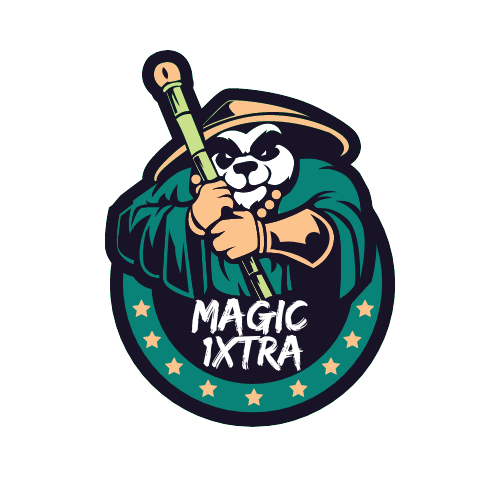In the annals of rock, there are certain locations synonymous with historic, even iconic, festivals, especially around the late 1960s and early 70s. But putting Woodstock and Glastonbury to one side, Plumpton was the place to be.
It may not ring quite the same bell, but in 1969 and 1970, Plumpton Racecourse near Lewes in the Sussex countryside was host to the 9th and 10th National Jazz and Blues Festival. Neither one has become part of rock folklore, the line-ups of current and future rock giants who played there over on those early August weekends are outstanding.
Listen to the Summer Of ’69 playlist on Spotify.
The 1969 festival
Staged from 1961 by Marquee Productions, the sister company of the famed London rock club, the JB&P Festival (initially just called the National Jazz Festival) was the forerunner of what became, and still is, the Reading Festival. But where it had earlier been one of the premier showcases for jazz and blues artists alone, by 1969 it was opening its doors more and more to burgeoning guitar rock. On that year’s bill, Chris Barber was one of the only artists flying the flag for the jazz brigade, as he did the following year, by which time he was largely on his own.
Originally to be held near London’s Heathrow Airport it was switched to Plumpton rather late in the day, and early adverts still had the West Drayton site. On the Friday night in 1969 topping the bill was, “The Pink Floyd”; they opened with, “Set the Controls for the Heart of the Sun” and encored with, “Interstellar Overdrive.” Among the support bands were Soft Machine and another rare jazzer, Keith Tippett. On Saturday afternoon the outrageous Bonzo Dog Band headlined with help from festival regular Roy Harper.
Saturday evening and things were beginning to build with King Crimson, Yes, Aynsley Dunbar (who would go on to drum with Frank Zappa and the Mothers, Journey and Starship among many other bands) and the Spirit of John Morgan. There was also plenty for blues lovers with both, Chicken Shack and the Groundhogs. Headlining on Saturday were The Who, a week later they would be conquering Woodstock with their Tommy mini-opera set and their set at Plumpton was very similar to their more famous festival set in up state New York.
Sunday afternoon was one given over to gentler folky sounds with the outstanding, Magna Carta on the bill and a more bluesy beat from Long John Baldry with the magnificent Pentangle as top of the afternoon bill. For the evening it was a rockier affair, but it also included the London cast of the musical Hair which included Marsha Hunt and Paul Nicholas. There was Blodwyn Pig, Mick Abraham’s band since leaving Jethro Tull and Keef Hartley who, like The Who, would be at Woodstock a week later. Headliners were The Nice whose third album was about to be released and would become their first to chart, making it to No.3 in the UK and including their 12 minute work out on Bob Dylan‘s ‘She Belongs To Me’ which they performed at Plumpton.
Tickets for the whole weekend cost £2.50, and, in those non-inflationary times, the price stayed the same in 1970. The Who and Pink Floyd were both paid £600 for their appearance; Yes, The Straws and King Crimson all got £25 each.
The 1970 festival
In 1970 Black Sabbath were there, literally three weeks away from their UK singles chart breakthrough with “Paranoid,” and, yes, they did that number, and “Iron Man.” Wishbone Ash, preparing to record their self-titled debut album for release that December, played a set. Yes were on hand, a year after their album debut but with their second LP Time and a Word brand new in the shops, and “I’ve Seen All Good People” on their setlist.
Then there was Deep Purple, already two years into their recording life. Basking in the acclaim for their newly-released In Rock album, they served notice of their presence at the festival by setting fire to their monitors during their performance. A week later, they were in the singles chart with “Black Night.”
Many others also served on that tenth National Jazz, Blues & Pop Festival bill, many of them names that would populate the charts and the concert venues of the UK and beyond in the months and years to come. They included Family, East of Eden, Juicy Lucy, Fat Mattress, Van Der Graaf Generator and Rory Gallagher‘s band, Taste. Peter Green was there, just weeks after his sensational departure from Fleetwood Mac. So was Cat Stevens, in the early stages of his transformation from pop hitmaker to sensitive singer-songwriter, with a set that featured “Father and Son,” “Lady d’Arbanville” and “Where Do The Children Play.” The Groundhogs, the Strawbs, Magna Carta, the Incredible String Band, Caravan, the list went on.
The line-up really was a very British affair with few visitors from overseas, but as the programme declared that Sunday afternoon offered “From the USA, Turley Richards.” Far from a big name even then, the blind singer from Charleston, West Virginia had made something of a name for himself in the clubs of New York and had chart success in the US with his cover of Bob Dylan‘s “Love Minus Zero/No Limit.” Five years earlier, he released an album called The Many Souls of Turley Richards that includes a very early version of “Feelin Good,” one that may have even preceded Nina Simone‘s version, or at least been recorded at the same time. In 1979 his was the original version of “You Might Need Somebody,” which became a big hit for Randy Crawford.
Some may have been saving their money for the famed Isle of Wight Festival later in that memorable month of August 1970, but for those who didn’t, Plumpton was the place to be that weekend.
Looking for more? Discover the full story behind Woodstock’s “three days of peace and music.”


